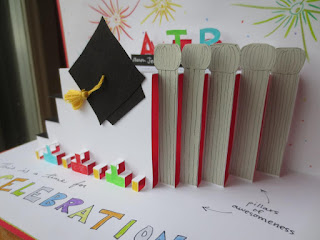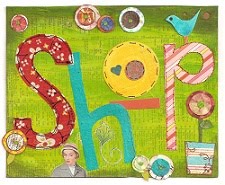As you know, this fall I took a fibers class at the University. Years ago, this is the class that inspired me to start taking studio classes at all, but it had what felt like a hundred prerequisites, so I only just got to take it this semester... finally! In this class, I had about a million + one epiphanies, one of them being that being a professional artist is hard work. My last post was related to this topic as well, but today I have a little more to share about it.

Hard work?
Yes, indeed. There is controversy about this concept. Forgive me for any generalizations here, but there are many people, people who are not artists or art appreciators, who think that art-making is "fluff." That art-making is easy. That it doesn't take any special skills, or that a person who calls themselves an artist is just avoiding getting a "real job." Some people think that being an artist isn't a profession of value when compared to a doctor, lawyer, teacher/professor, scientist, factory worker, safety inspector, janitor, pilot, IT specialist, engineer, realtor, museum curator, government representative, etc etc etc. To be an artist means to lounge around, "dabbling" with materials and supplies for fun. As such, it is a constant conversation (I want to avoid the conflict-related word "battle") between serious artists and the world at large, not to mention between the serious artist and herself, about the value of art-making and the outcomes of art-making, and what that value translates to when it comes to getting paid.
This class showed me just how hard it is to make something that is successful at expressing what I feel needs to be said, in a medium in which, despite what I think I know, I am actually a beginner. The benefit (or sometimes the curse) of taking a class is that one is given direction. What is there to be said, for example, in a 24" x 24" square of white cotton? How can it be altered to reflect your point of view? Oh, and please have it completed in ---(too short)--- amount of time.
Walking into the class in August, I had a bit of a chip on my shoulder. I've been sewing for years. I interact with fabric in my work all the time.
But. Some days I found dyeing to be my nemesis. Setting up a loom to weave for the first time was intimidating--like learning a whole new language. The commitment I had to make to an idea from the beginning didn't always result in the most polished of pieces in the end. Pushing on in the fibers studio--when my back hurt from bending over the loom, or from standing so long on concrete floors, hands wrinkled and sensitive from water exposure and covered in color, or when I was frustrated because I wasn't getting results I'd hoped for, or when it was too cold or too hot thanks to the intermittent HVAC system there and I was missing out on other things that matter to me, like time at home with my family and my couch and my not-so-bright lights--that was part of the hard work.
There was one moment when I doubted myself and ability so strongly, some part of my brain asked, "Who do you think you are?" (This is when I knew I had to call it a night. After a hot meal and a good night's sleep, I was lucky enough to get out of that space.)
BUT THEN!!!! The good times! The benefits! The positive outcomes!
For my final, I had a strong idea, the result of a sample I made serendipitously, without meaning to.
The project is called Reflect. Connect. I actually painted the yarn on the loom so I could have the colors I wanted.
8" x 8" pockets you could slide your hand into and interact with. Texture, light, weight, feel, movement, color. Oh, and what's this little thing? A tag, with a prompt:
When is the last time someone did something nice for you? How can you help to restore someone's faith in humanity?
When is the last time you had fun? How often do you play?
Reflect.
Oh, here's a button, and on the other side a hole. Oh that person has one too. I wonder if they can connect? What's their prompt? What does that person have to say? Who are they?
Connect.
The critique was slow at first (how can I invite people to touch them without putting a sign up that says "Please touch"?) but once the pouches came off their stand, the room lit up. Conversation, distraction, chatter, fun, interaction, reflection, connection.
After class, one of my classmates said, "This is a highly successful project. It is absolutely functional, even though it's not wearable." (Many fiber art pieces are wearable and displayed on mannequins.)
I was on high for three days. Similar to the feeling a surgeon might have upon signing someone's hospital discharge papers after a successful complex surgery, I felt like I did something that mattered. I created something that didn't exist before and it affected and touched people in a positive way. I expressed my idea, that community and humanity are important and that art can facilitate them.
Just like in any profession, there are hard parts and there are great parts. Lucky for me, the good happens often enough, helping to build my resilience so that I am able to push through the hard parts. And, I do have fun! Who says it's not ok to have fun in your work? Who says lawyers don't have fun doing the research for their cases? That computer engineers don't love their work, even when something doesn't work? This is part of finding your career fit, that balance of hard work and having fun, and feeling like what you do matters, to you and to someone else.



























































